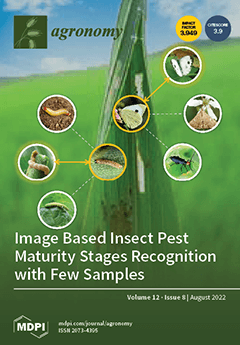Fertilization decisions depend on the measurement of a large set of soil fertility indicators, usually through laboratory determination, which is costly and time-consuming. Visible and near-infrared (vis-NIR) spectroscopy combined with machine learning can simultaneously predict various soil fertility indicators. Spectroscopy is inherently less accurate than direct laboratory determination. However, in many fertilization recommendation contexts, farmers mainly fertilize according to classified fertility indicators, rather than by continuous soil property values. These classes have defined limits of property values. We hypothesized that the additional inaccuracy from spectroscopy may not be important for properties grouped into classes. This study compared the indirect and direct prediction of soil fertility classes. Indirectly, by (1) using vis-NIR spectra with machine learning to predict 20 soil fertility indicators (pH, soil organic matter (SOM), cation exchange capacity (CEC), total nitrogen (TN), total phosphorus (TP), total potassium (TK), alkali-hydrolyzable nitrogen (AN), available phosphorus (AP), available potassium (AK), calcium (Ca), magnesium (Mg), silicon (Si), sulfur (S), boron (B), iron (Fe), manganese (Mn), copper (Cu), Zinc (Zn), molybdenum (Mo) and chlorine (Cl)) and (2) allocating the indicators to soil fertility classes. Directly, by predicting soil fertility classes directly from vis-NIR spectra using machine learning. The prediction accuracy of these two methods were compared and the accuracies needed for the acceptable class allocation of the fertility indicators were determined. The example dataset is a soil spectral library from the Guizhou Province, southwest China. The model performance was evaluated by the overall allocation accuracy and
tau index, which accounts for class imbalance. For direct allocation based on three fertility classes (low, medium and high), the overall allocation accuracy of eight properties (CEC, Cu, Si, Zn, S, Mn, Ca and Mg), nine properties (B, AN, TK, AK, SOM, TN, TP, Fe and Mo) and three properties (Cl, AP and pH) were within the range of 0.80–1.0, 0.60–0.80 and 0.40–0.60, respectively. For indirect allocation based on the same classes, the allocation accuracy of nine properties (TN, CEC, Cu, S, Zn, Si, Mn, Ca and Mg), nine properties (B, TK, pH, TP, AK, AN, Fe, Mo and SOM) and two properties (Cl and AP) were within the range of 0.80–1.0, 0.60–0.80 and 0.40–0.60, respectively. We conclude that vis-NIR spectroscopy was fairly successful for soil fertility class allocation for most of the soil properties, using either direct or indirect models. The advantage of indirect models is that both specific property values and soil fertility classes can be obtained at no increase in cost, while direct models are suggested when only soil fertility class information are available.
Full article





